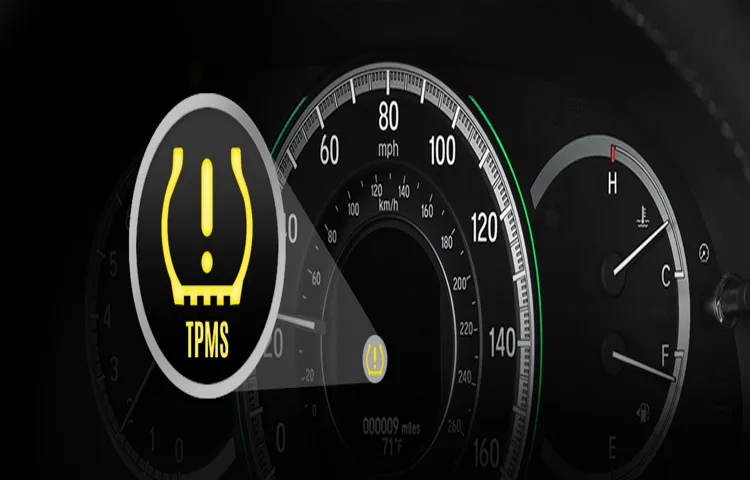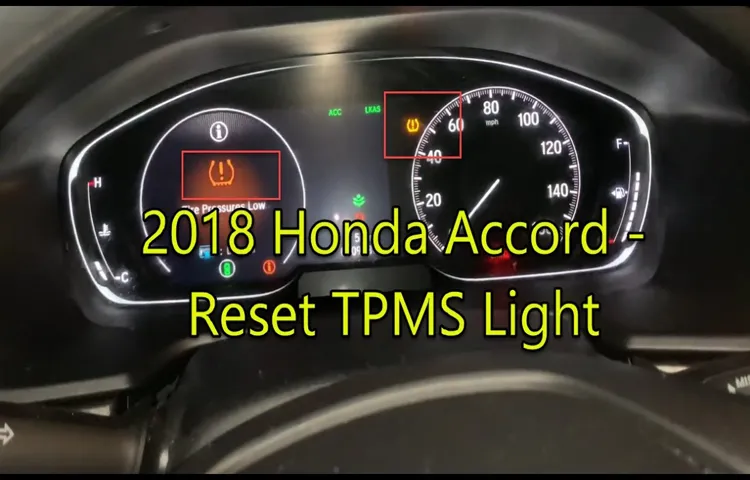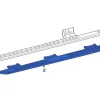Maintaining the tire pressure of your Honda Accord 2018 is essential for a comfortable and safe driving experience. But do you know how to do it properly? Checking tire pressure might seem like a simple task, but it requires attention to detail and a few key steps. In this blog, we would guide you through the entire process of checking tire pressure on your Honda Accord 2018, ensuring that you’re doing it right and keeping your car running smoothly.
So let’s dive in and learn how to keep your Honda Accord’s tires properly inflated!
Table of Contents
Why Checking Tire Pressure is Important
If you own a Honda Accord 2018 model, it is essential to check the tire pressure regularly. Checking tire pressure is important for several reasons. Firstly, it helps maintain the optimal tire pressure balance, which is necessary for optimum fuel efficiency, improved vehicle handling, and overall tire performance.
Secondly, it ensures your safety on the road. Underinflated tires can overheat, leading to a tire blowout, which can be dangerous. Overinflated tires, on the other hand, can cause premature tire wear, leading to increased risks of accidents.
To check tire pressure on a Honda Accord 2018, you need a tire pressure gauge, which can easily be purchased from any auto parts store. Simply unscrew the valve cap from the tire, press the gauge onto the valve stem firmly, and check the reading. If it is below or above the specified level in the owner’s manual, adjust the pressure accordingly.
By doing so, you’ll be keeping your vehicle running smoothly, prolonging the life of your tires, and ensuring your safety on the road.
Safety
Maintaining proper tire pressure is essential for safe driving. It is one of the simplest yet most critical tasks that often gets overlooked. Many people do not realize that having underinflated or overinflated tires can pose significant risks and lead to accidents.
Low tire pressure can affect the vehicle’s handling, causing it to pull, and hinder its ability to brake. On the other hand, overinflated tires can become a safety hazard by causing blowouts, reducing the tire’s traction, and increasing the risk of hydroplaning. Both underinflated and overinflated tires can also impact the tire’s lifespan, fuel economy, and lead to more frequent replacements.
It is recommended to check tire pressure at least once a month and before a long trip to ensure your vehicle’s safety and longevity. So don’t forget, proper tire pressure is not just about fuel efficiency but ultimately the safety of you and your fellow passengers on the road.

Fuel Efficiency
When it comes to fuel efficiency, it’s important to consider all the factors that affect your vehicle’s consumption. One of the keys to better gas mileage is maintaining the correct tire pressure. This may seem like a small detail, but it can make a big difference over time.
When your tires are underinflated, they create more friction with the ground, which means your engine has to work harder to move your car forward. This extra effort can result in a significant increase in fuel consumption and ultimately, a higher cost at the pump. On the other hand, when you keep your tires inflated to the proper levels, you reduce friction and your car becomes more efficient.
Not only does this save you money, but it’s also better for the environment as it lowers your carbon footprint. So, the next time you’re checking your car’s maintenance, don’t forget to check your tire pressure, and make sure you’re getting the most out of your fuel.
What You’ll Need
If you’re wondering how to check tire pressure on your Honda Accord 2018, there are a few things you’ll need to get started. Firstly, a tire pressure gauge is essential to accurately measure the pressure in your tires. You can easily find one at your local auto parts store or online.
Secondly, make sure you know the recommended tire pressure for your Honda Accord 2018, which can be found in your owner’s manual or on the tire placard located in the driver’s side door jamb. Finally, ensure that your tires are cool before checking the pressure, as heat can cause the pressure to increase and give you an inaccurate reading. With these materials, you’ll be well on your way to checking the tire pressure of your Honda Accord 2018, ensuring your safety and the longevity of your tires.
Tire Pressure Gauge
When it comes to checking your tire pressure, a reliable tire pressure gauge is essential. But what exactly do you need to get started? Firstly, you’ll need the gauge itself. There are a variety of gauges available on the market, from digital to analog, so it’s important to choose one that suits your needs and preferences.
You’ll also need to make sure the gauge is compatible with the valve stem on your tires. In addition to the gauge, it’s a good idea to keep a tire pressure chart handy. This will help you determine the optimal tire pressure for your vehicle, which can vary depending on factors like tire size and load capacity.
Finally, make sure you have access to an air pump or compressor to inflate your tires if necessary. With these tools at hand, you’ll be able to check and adjust your tire pressure with ease, helping to ensure a safe and efficient ride. Remember to regularly check your tire pressure to prolong the life of your tires and keep your vehicle running smoothly.
Owner’s Manual
As a new car owner, you’ll need a few essentials to keep your vehicle running smoothly. Firstly, you’ll need to make sure you have the owner’s manual. This book is specifically designed for your car and will contain valuable information on everything from maintenance schedules to trouble-shooting tips.
It’s essential to read through the manual carefully to familiarize yourself with your car’s features and functions. Additionally, you’ll need to have a basic tool kit on hand. This should include a jack, lug wrench, pliers, and screwdrivers.
These tools will come in handy if you need to change a tire or perform other minor repairs. Another must-have item is a tire pressure gauge. Keeping your tires properly inflated is crucial to maintaining good gas mileage and ensuring your car handles safely on the road.
A tire pressure gauge is an inexpensive device that you can use to regularly check the pressure in your tires. Finally, it’s a good idea to invest in a reliable roadside emergency kit. This should include items like jumper cables, a flashlight, flares, and a first aid kit.
You never know when you may experience a car emergency and having the right supplies on hand may be the difference between a difficult situation and a manageable one. By having these essential items on hand, you’ll be well-prepared to handle any situation that may arise with your vehicle. Remember to keep your owner’s manual handy and to regularly inspect your car to ensure it’s running smoothly and safely.
Steps to Check Tire Pressure
Looking to ensure your 2018 Honda Accord’s tires are properly inflated? Checking tire pressure is easy and can be done at home with a few simple steps. First, make sure your tires are cold – that is, they haven’t been driven on for at least three hours. Then, locate the recommended tire pressure for your vehicle, which can be found in the owner’s manual or on a sticker on the driver’s side door jamb.
Using a tire pressure gauge, which can be bought at any auto supply store, remove the valve cap and place the gauge over the valve stem. Press down until you hear a hiss of air, and then look at the gauge’s reading. If the number matches the recommended tire pressure, you’re all set.
If not, use an air compressor to fill the tire to the correct pressure. Repeat the process on all four tires, and you’ll have peace of mind knowing your Honda Accord is ready for the road.
Step One: Park the Vehicle
One of the most important aspects of maintaining your vehicle’s health is checking the tire pressure regularly. This ensures that your car operates efficiently, reduces fuel consumption and minimizes the risk of tire damage and accidents. The first step in checking your tire pressure is to park your car in a safe place and put it in park.
Make sure the ground is level and free from any objects that may tamper with the readings. Remember, tire pressure readings are more accurate when the tires are cool, so it’s best to check first thing in the morning or after the car sits for a while. Before checking the pressure, inspect the tires for any signs of damage such as cuts, tears, bulges or sidewall damage.
If you find any, don’t check the pressure, instead take the car to a mechanic for further inspection. Once you’ve ensured the tires are intact, locate the manufacturer recommended tire pressure, which can be found in several locations such as the owner’s manual, the driver’s side door jamb, or the glove compartment. Use a tire pressure gauge to check the pressure and add air as needed.
In summary, the first and most crucial step in checking tire pressure is to park the car in a safe place and inspect the tires, ensuring they are in good condition.
Step Two: Locate the Tire Pressure Information
One of the critical steps in checking your car’s tire pressure is to locate the correct tire pressure information. The information can be found in several places, such as the owner’s manual, the driver’s side doorjamb, or the tire placard. The tire placard is usually located on the inside of the driver’s side door or inside the glove compartment.
It contains vital information, such as the recommended tire pressure, size, and load capacity for your vehicle’s tires. Overinflated or underinflated tires can lead to uneven wear, poor handling, and reduced fuel efficiency. Therefore, it’s essential to check your tire pressure regularly and keep it at the recommended level for optimal performance and safety.
With the correct tire pressure information at hand, you can confidently check your car’s tires and avoid potential road hazards.
Step Three: Remove the Valve Cap
When it comes to maintaining your vehicle’s tire health, checking their pressure is a crucial step. The third step to do so is to remove the valve cap. This may seem like a trivial task, but it is important to do it carefully to avoid losing the cap or damaging the valve stem.
Start by using your fingers to unscrew the cap counterclockwise. If the cap is too tight, you can use a valve cap removal tool or pliers to loosen it. Once the cap is removed, you can insert the tire pressure gauge into the valve stem to get a reading of the air pressure.
Remember to hold the gauge straight and steady for an accurate reading. By following these simple steps, you can easily check your tire pressure and keep them in optimal condition for safe driving.
Step Four: Press the Gauge Onto Valve
In this step, it’s time to press the gauge onto the valve to get an accurate reading of your tire pressure. This is a crucial stage in the process, as it provides the information you need to adjust your tire pressure if necessary. It’s important to make sure that the gauge is securely attached to the valve before taking a reading.
One tip is to hold the gauge in place with one hand while inflating the tire with the other. This ensures that the gauge remains in place and provides an accurate reading. With the gauge attached, you can check the pressure reading and compare it to the recommended pressure for your vehicle.
If there is a significant difference between the two, you may need to adjust your tire pressure, which is covered in the next step. By following these steps, you will keep your tires in top condition and improve the safety and handling of your vehicle on the road.
Step Five: Read the Gauge
Once you have connected the tire gauge to the valve stem, next, it’s time to read the gauge to determine the current tire pressure. The gauge will display the air pressure in pounds per square inch (psi), which is the unit used to measure tire pressure. Be sure to check your vehicle’s owner’s manual or the sticker on the driver’s door jamb for the recommended psi level for your tires.
If the gauge reads higher than the recommended level, release some air by pressing the gauge’s button. On the other hand, if the gauge reads lower than the recommended level, fill the tire with more air until it reaches the correct psi level. It’s important to note that you need to check the tire pressure of all four tires, as they may require different psi levels.
By regularly checking your tire pressure, you can ensure that your vehicle is safer to drive, and you are also likely to save on fuel costs in the long run.
Step Six: Add Air If Needed
Adding air to your tires is an important step in maintaining them for optimal performance. If you find that your tire pressure is too low, you’ll need to add air to them. First, consult your vehicle’s manual to determine the recommended tire pressure.
Then, use a tire pressure gauge to measure the current pressure in your tires. If they’re below the recommended pressure, you’ll need to add air. You can do this by visiting a gas station that has an air compressor, or you can purchase a portable air compressor to use at home.
Be sure to check your tire pressure once a month to ensure that they’re properly inflated. Over- or under-inflated tires can impact your vehicle’s handling, fuel economy, and overall safety on the road. By taking the time to check and add air to your tires as needed, you can help extend their lifespan and keep your vehicle running smoothly.
Tips and Tricks
If you’re wondering how to check tire pressure on your Honda Accord 2018, you’re in luck! First, you’ll need a tire gauge which you can easily find at any auto parts store. Make sure your tires are cool before checking the pressure, as tire pressure increases when tires heat up. Locate the valve stem on your tire and remove the valve cap.
Press the tire gauge onto the valve stem and read the pressure. Compare the reading to the recommended tire pressure in your vehicle owner’s manual or the label inside the driver’s side door jamb. If the pressure is too low, add air until the desired pressure is reached.
If the pressure is too high, release air until the desired pressure is reached. It’s important to regularly check the tire pressure on your Honda Accord 2018 to maintain optimal performance, safety, and longevity of your tires.
Check Tire Pressure Monthly
Checking tire pressure regularly is an essential aspect of driving that many people tend to overlook. However, it’s essential to keep in mind that tire pressure directly affects your driving experience and ensures maximum safety on the road. A few reasons why it is important to check your tire pressure monthly are to improve your fuel efficiency, increase the lifespan of your tires, and ensure your safety on the road.
But, what is tire pressure? It is the air pressure inside your tire that creates a smooth driving experience. To ensure optimal tire pressure that enhances your driving experience, it is advisable to check your team’s tire pressure at least once a month. It is an easy process that you can do yourself with a tire pressure gauge or, even better, a digital tire pressure gauge.
Ensuring that you maintain the right tire pressure is essential for your safety and the safety of others on the road. So, take a few minutes every month to check your tire pressure and optimize your driving experience.
Check Tire Pressure When Tires are Cold
Tire pressure is one of the most important aspects of maintaining your vehicle’s performance and safety. The tire pressure applies to how much air is inside each tire, and it affects everything from fuel economy to handling to the longevity of your tires. One crucial tip to keep in mind is checking tire pressure when the tires are cold.
This means that you should measure the pressure before you drive the car for more than a few minutes, as the heat generated from driving can increase the pressure and provide an inaccurate reading. One of the most common mistakes people make is checking the tire pressure when the tires are already warm, which can cause them to unknowingly overinflate the tires. Overinflated tires lead to uneven tread wear and a less comfortable ride, not to mention reduced grip and stability while driving.
To avoid these issues, be sure to wait until the tires are cold before checking your tire pressure to ensure a safe and smooth ride, and a long-lasting set of tires.
Check Tire Pressure Before Long Trips
Tire Pressure Before hitting the road for a long trip, it is crucial to check your tire pressure. Low tire pressure can cause a lot of problems and safety hazards. Not only can it lead to decreased fuel efficiency, but it can also cause tires to wear out faster or even puncture while you’re driving.
You don’t want to get stuck on the side of the road in the middle of nowhere with a flat tire, especially when you’re far from home. Checking tire pressure is simple and can be done with a tire pressure gauge, which you can purchase at your local auto shop or online. Simply remove the valve cap from each tire, attach the gauge to the valve stem, and read the pressure reading.
Make sure that the pressure matches the recommended amount listed in your owner’s manual, which is typically between 30-35 psi. It’s important to check the pressure when the tires are cold, as heat generated during driving can increase the pressure. By checking your tire pressure before you leave, you can ensure that you have a safe and smooth road trip.
Final Thoughts
Checking the tire pressure on your Honda Accord 2018 is an essential maintenance task that should not be overlooked. To check the tire pressure, you will need a tire pressure gauge. The recommended tire pressure for your Honda Accord 2018 can be found in the owner’s manual or on the driver’s door jamb.
Make sure the tires are cold before checking the pressure, as driving even a short distance can increase the pressure and give an inaccurate reading. Remove the valve cap and insert the tire pressure gauge into the valve stem. The gauge will give you a reading, which you can then compare to the recommended pressure.
If the pressure is too low, inflate the tire to the recommended pressure. If the pressure is too high, release air until it reaches the recommended pressure. Regularly checking your tire pressure will not only ensure your safety on the road but also improve your Honda Accord’s fuel economy and prolong the life of your tires.
Conclusion
And that, my dear reader, is how you become a tire pressure pro on your Honda Accord 2018! Remember, maintaining proper tire pressure not only enhances fuel efficiency and tire life, but ultimately ensures a safe and smooth ride. So, keep your tires inflated and your head held high, because you now have one more valuable skill in your arsenal of vehicle maintenance.”
FAQs
What is the recommended tire pressure for a Honda Accord 2018?
The recommended tire pressure for a Honda Accord 2018 is 32 psi for the front tires and 30 psi for the rear tires.
How often should I check my Honda Accord 2018 tire pressure?
It is recommended to check your Honda Accord 2018 tire pressure at least once a month or before long trips.
Can I rely on the tire pressure monitoring system (TPMS) to check my Honda Accord 2018 tire pressure?
While the tire pressure monitoring system (TPMS) can detect low tire pressure, it is still important to manually check tire pressure using a tire pressure gauge.
What are the consequences of driving with underinflated tires on my Honda Accord 2018?
Driving with underinflated tires can lead to decreased fuel efficiency, increased tire wear and tear, poor vehicle handling, and potentially dangerous blowouts.
Do I need to inflate my Honda Accord 2018 tires when they are hot or cold?
The recommended tire pressure for a Honda Accord 2018 should be measured when the tires are cold, as hot tires can give inaccurate readings.
Can overinflated tires affect my Honda Accord 2018 handling and overall performance?
Overinflated tires can lead to a harsher ride, decreased tire lifespan, and poor vehicle handling, as they reduce the tire’s contact patch with the road surface.
How can I ensure that the tire pressure gauge I am using is accurate when checking my Honda Accord 2018 tire pressure?
It is recommended to use a digital tire pressure gauge that has been calibrated within the last six months to ensure accurate readings.



